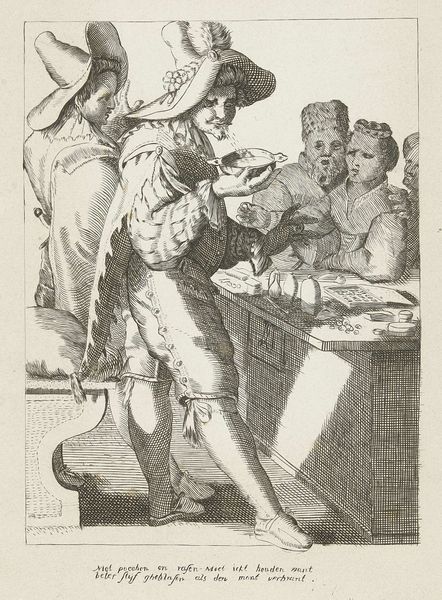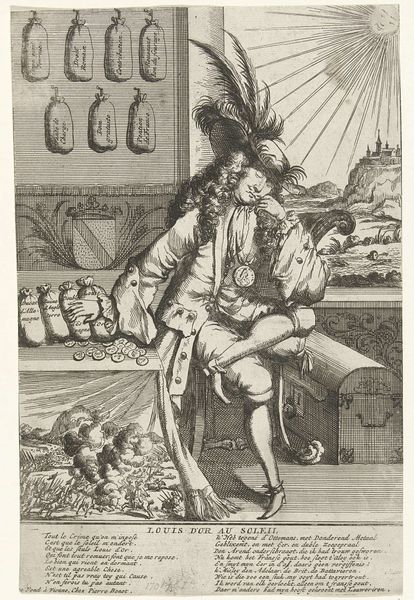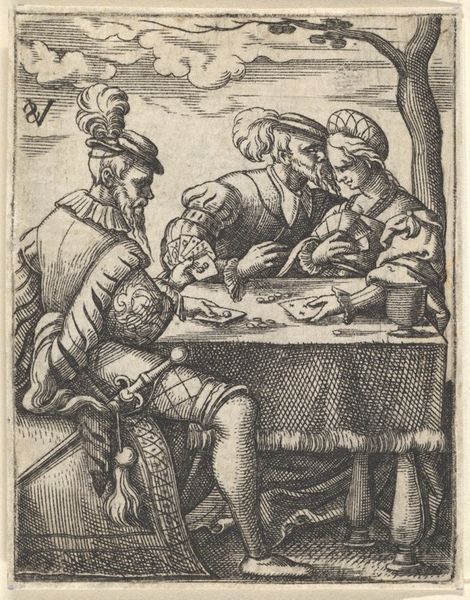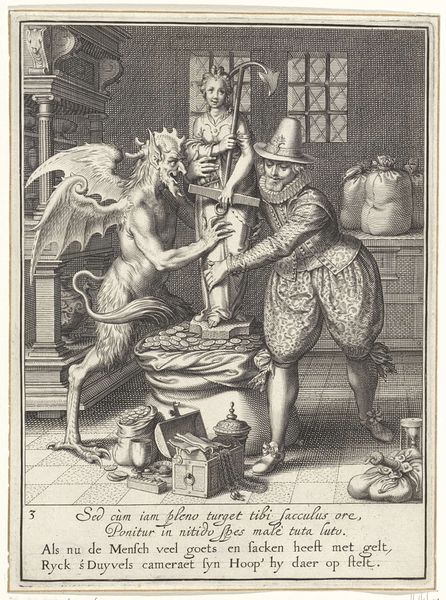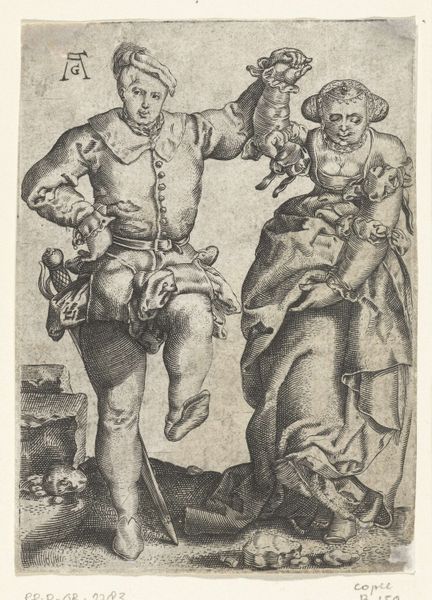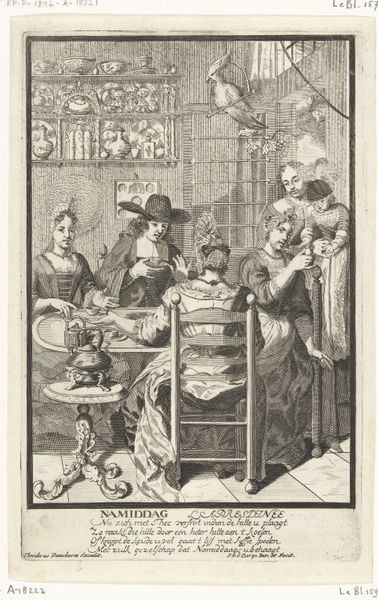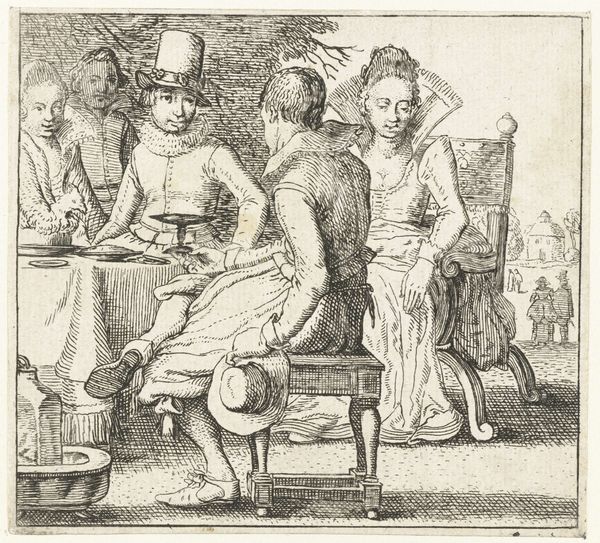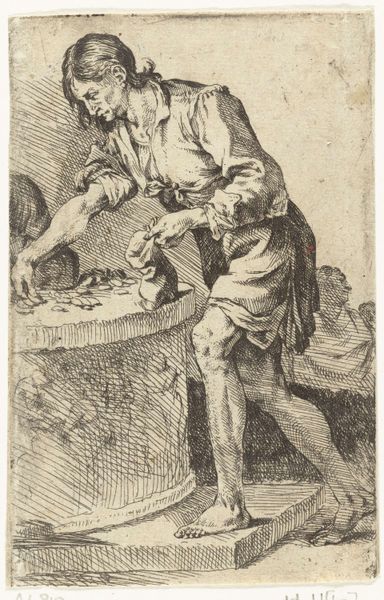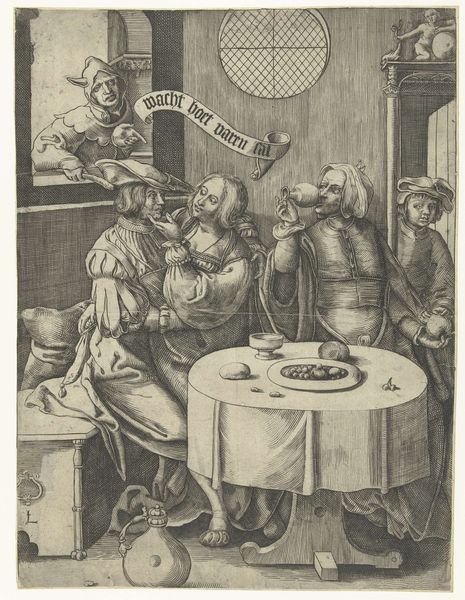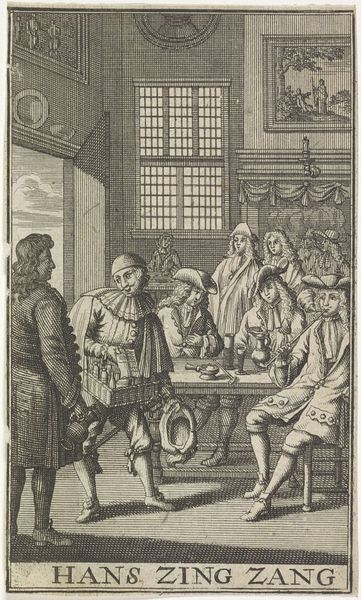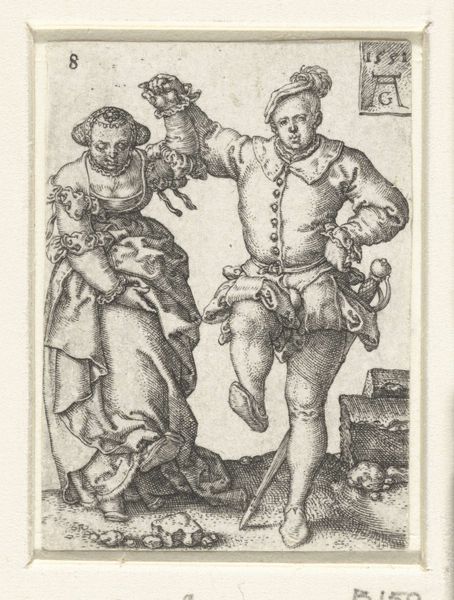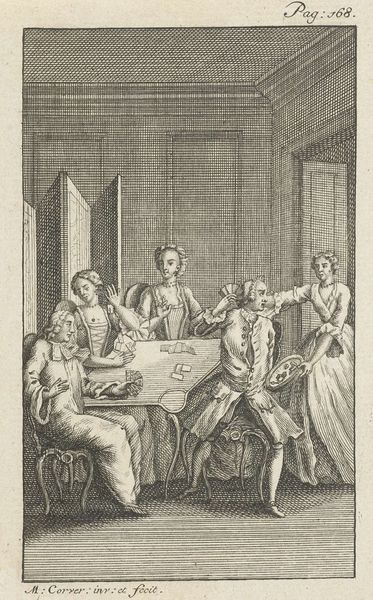
print, engraving
#
baroque
# print
#
figuration
#
genre-painting
#
engraving
Dimensions: height 211 mm, width 146 mm
Copyright: Rijks Museum: Open Domain
Curator: I find myself drawn into this engraving, "Beter hard geblazen dan de mond verbrand," or "Better to blow hard than burn the mouth," dating back to sometime between 1590 and 1632. It's by Pieter de Jode I, a master of the baroque print. The artwork resides here at the Rijksmuseum. What are your initial impressions? Editor: Immediately, there's a strong feeling of guarded opulence, something performative in the figures' display. Their theatrical hats, the precise display of what appear to be coins or medals—they communicate wealth, yes, but also anxiety about losing it. It almost feels like the scene has the tenor of a cautionary moral play. Curator: That aligns with my interpretation, especially when considering the socio-economic upheavals of that era. I perceive it to be deeply interwoven with cultural anxieties regarding the emerging merchant class and how societal power dynamics were perceived in response to social change, wealth, and reputation. Editor: You're absolutely right. The symbolism inherent in the blowing imagery really grabs my attention, too. Blowing on the substance held in the central figure's hands speaks of the importance of care and precaution and points to a kind of learned ritual. Does it speak to the temperance so often found within 16th century art? Is there a message of 'don't be rash'? Curator: Precisely. The entire tableau reads to me as a comment on consumption, particularly when linked to economic policies of the day, exploring the ethics surrounding wealth accumulation versus moral grounding. What consequences were understood to exist then as opposed to now? Editor: Seeing it that way changes the composition, shifting the focus from what seems initially a scene of jovial interaction to a set of tense, careful exchanges, a stage set to impart a powerful lesson on greed. Curator: Agreed. I see the print serving as a vital tool for deciphering Baroque period social norms and offering insights into anxieties concerning wealth and prudence that are just as timely in the current climate. Editor: This reminds us that visual language has a timeless reach. The symbolism speaks as eloquently now as it would have when the print was initially created, prompting us to inspect the codes, habits, and visual symbols with the same precision those figures scrutinise what the one carefully cools.
Comments
No comments
Be the first to comment and join the conversation on the ultimate creative platform.
